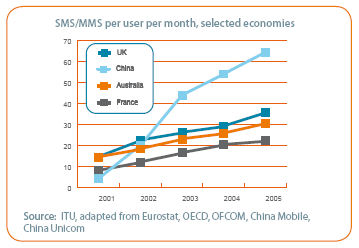|
chapter
one: going digital In a sense, humans have always been
digital. The digits of the hand have been used to create,
innovate, and communicate over the ages. And just as they
can be used to represent discrete numbers, in recent times a
system of discrete binary digits (zero and one) has been
developed, heralding the dawn of the digital age. Digital
technologies have been vital to the distribution of
knowledge and information, which, as many will argue, are at
the core of power in society. Through the use of
communication technologies like the internet and the mobile
phone, the reach of our relatively short digits has been
extended to a much larger sphere—that of the global digital
world.

 The thumb is a good example, as
expressions like “thumb culture” and “thumb tribes” abound:
from the narrow streets of Varanasi (India) to the wide
avenues of Barcelona (Spain), people are regularly seen
walking, eating, talking and even driving while their thumbs
busily tap on the keypad of handheld digital devices. As an
industry sector, messaging on mobile phones has in the space
of just a few years become a global industry generating
around USD 80 billion in annual revenue. It has also,
interestingly, taken off faster in some developing
countries, such as China, than in many developed ones. The
internet, too, has radically transformed businesses and
individual lifestyles alike, and enabled people to create
and share information and knowledge instantly and on a
global scale. Not surprisingly, the global consumption of
media today is predominantly in digital form. The next phase in this digital revolution is the transition from
low-speed to highspeed networks. Broadband networks are well
advanced in the fixed-line world, where there were some 216 million
broadband subscribers across the world at the end of 2005. Slowly
but surely, this transition is also occurring for mobile networks,
with the advent of mobile broadband, e.g. third generation mobile
systems (3G). At the end of 2005, there were some 62 million mobile
broadband users, with services launched in around 60 economies. In
addition, wireless local and metropolitan area networks (e.g. Wi-Fi,
WiMax) are starting to make an impact.
In the future, the digital revolution will
take on an entirely new dimension,
with the development of ubiquitous
networks and pervasive computing
based on technologies like RFID (radiofrequency
identification) and sensor
networks. In a future of digital ubiquity,
the world’s networks will not only
connect people and data, but also
things. In this way, mundane daily tasks
become increasingly automated, and the
technology behind them progressively
fades from the perception of the user.
This will have important implications not
only for society and individual lifestyles,
but also for business strategy and policy
priorities.
|